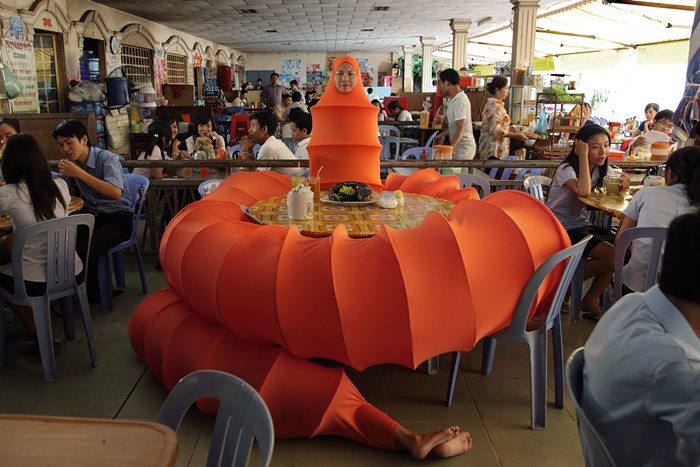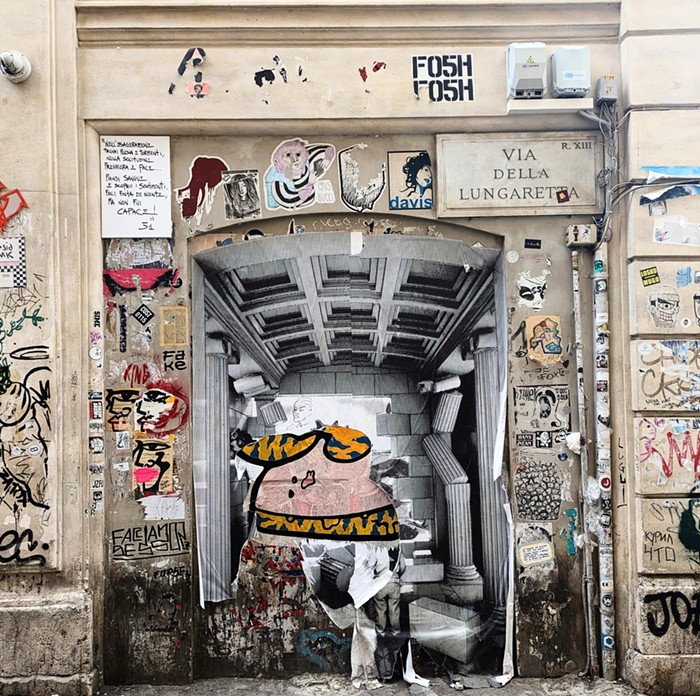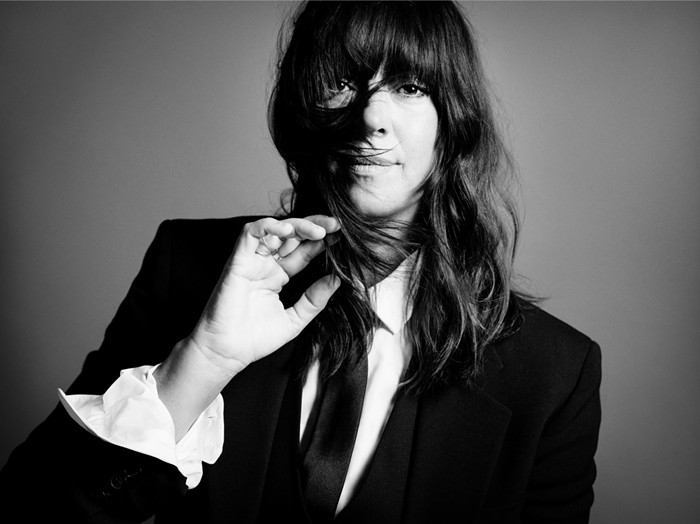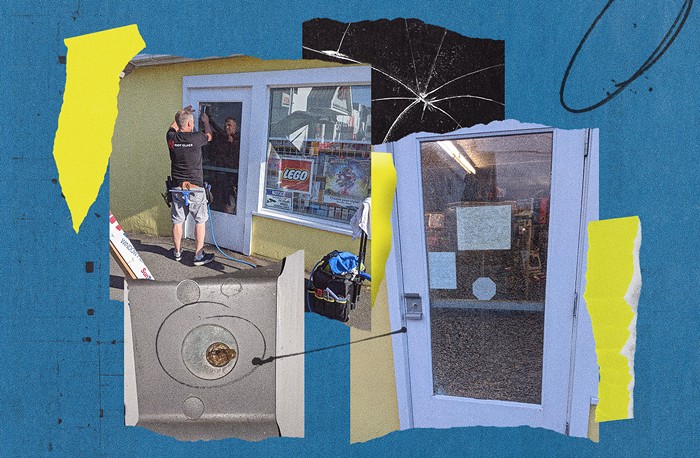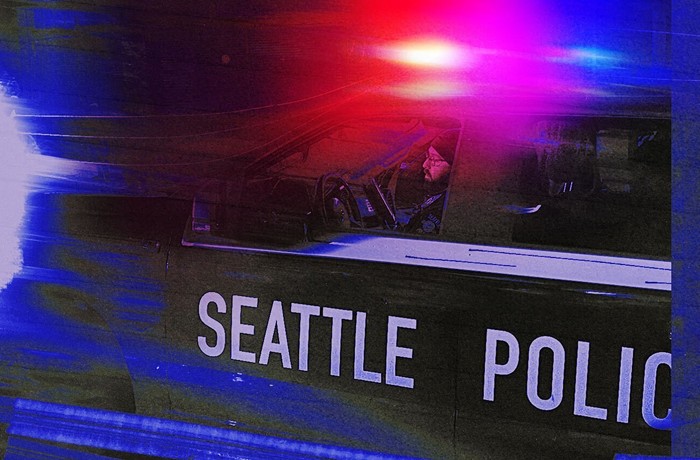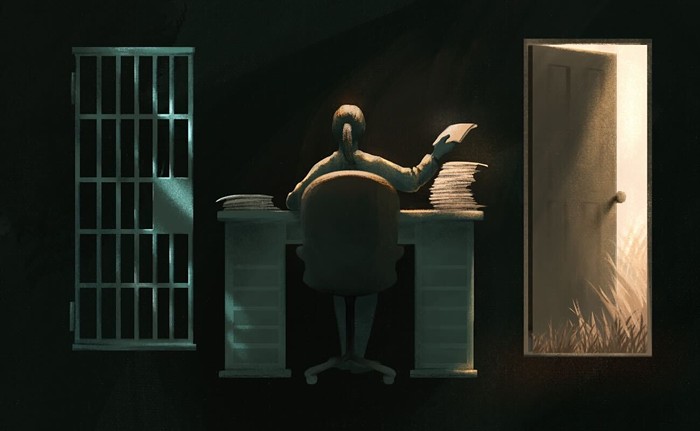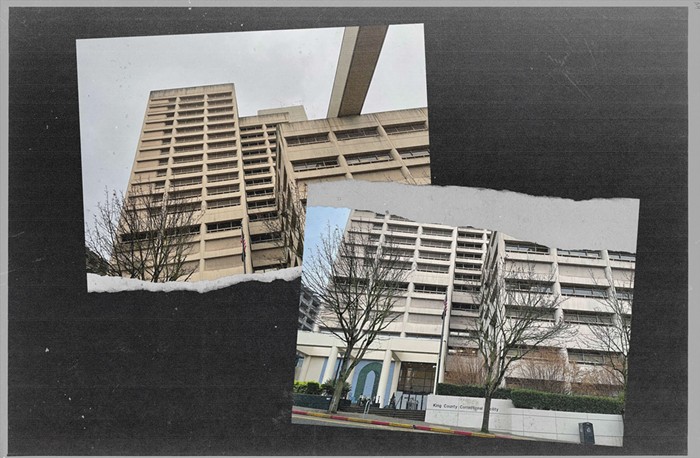Because this is my first encounter with Heide Hinrichs's work, this review will be more synchronic (about the objects themselves) than diachronic (the relations the objects have with other works, artists, and historical periods). The encounter with Hinrichs happened in Seattle Art Museum's SAM Next gallery, a space dedicated to local, national, and international contemporary art. Hinrichs is a local artist, but she does not come from here. She was born in Germany in 1976, studied art in a number of European cities, and currently lives in Seattle. The exhibit, called Borrowed Tails, is a collection of drawings and sculptures made from ordinary materials: lined paper, dead soccer and tennis balls, strings, cardboard boxes, a table, and a bicycle tube. Together, the ordinary objects suggest a spare or bare geography of trees, flowers, rocks, and an ocean.
With Hinrichs, the long-disused, mass-produced objects are not so much renewed/reactivated/repurposed, but instead placed into the tricky zone of suggestion. The objects point to something that they are not: That something else is nature. Not long ago, Hinrichs had a sculpture at Howard House gallery called Falling Flowers. In reality, the sculpture was a cluster of halved and inverted soccer balls. Some were painted pink and red. A wire held them just above the hardwood floor. Through their ugliness, they suggested the magic and beauty of falling flowers. Something similar to that sculpture can be found in one of the works in Borrowed Tails. On the floor next to the south entrance, there are two halved and inverted soccer balls that contain orange, transparent, plastic things—the composition suggests tropical flowers that are heavy and ready with ripe fruit.
And now for a big statement: An artwork either suggests something else or it draws attention to itself. For example, in the same museum, but on the second floor, there is a parked American car. It is, true, a part of an installation by Cai Guo-Qiang. But at this point, the end of the installation, the car is alone and faces the traffic on First Avenue. This is an art object because it is all about itself, or about what it really, really is—a car made in America. Outside, the cars streaming by are lost in the processes of transporting their occupants, of stopping and going, of passing under the shadows of the buildings, of burning fossil fuel. The car in the museum, which is also different from a car on display in a car dealership (let's leave that for another discussion), is only about the ontological status of an automobile.
On the northeast corner of the exhibit is the most important component of Borrowed Tails. It is the most important because it is the most suggestive. What it suggests is the mother of all life, the sea, and the remains of things that once lived, died, and returned to the depths of the sea. The work is composed of a pin board whose top has been sawed into waves and, on the floor before it, objects that look like bones—Hinrichs calls them tools, but that is not the immediate impression they give or suggest. From T. S. Eliot's "The Dry Salvages": "The sea is the land's edge also, the granite / Into which it reaches, the beaches where it tosses / Its hints of earlier and other creation: / The starfish, the horseshoe crab, the whale's backbone..." This is the first impression we get from these objects at the bottom of the pin-board sea. The one that's supposed to be a saw looks like the jaw of some sea monster; the thing that is supposed to be a pitchfork looks like the ossified foot of some great bird that lived on fish. And so from the ordinary objects we get a sense of what the historian Clive Gamble calls "deep time," objects that are from a time that's so remote that they have about them an impenetrable and unsettling otherness.
There is something else worth pointing out in this exhibit. The objects are not that random but form something like a consistent substrate for this spare geography. That substrate is made up of a child's education. The paper with the drawings of animals is from school notebooks; the balls are from the gyms and fields of a young person's physical ed; the table is from a classroom that had a board with maps, schedules, pictures of dinosaurs pinned to it. Through Hinrichs's careful refinement and relocation, this thin layer of a long-disused education comes to suggest the depths of the seas and the mystery of trees.


